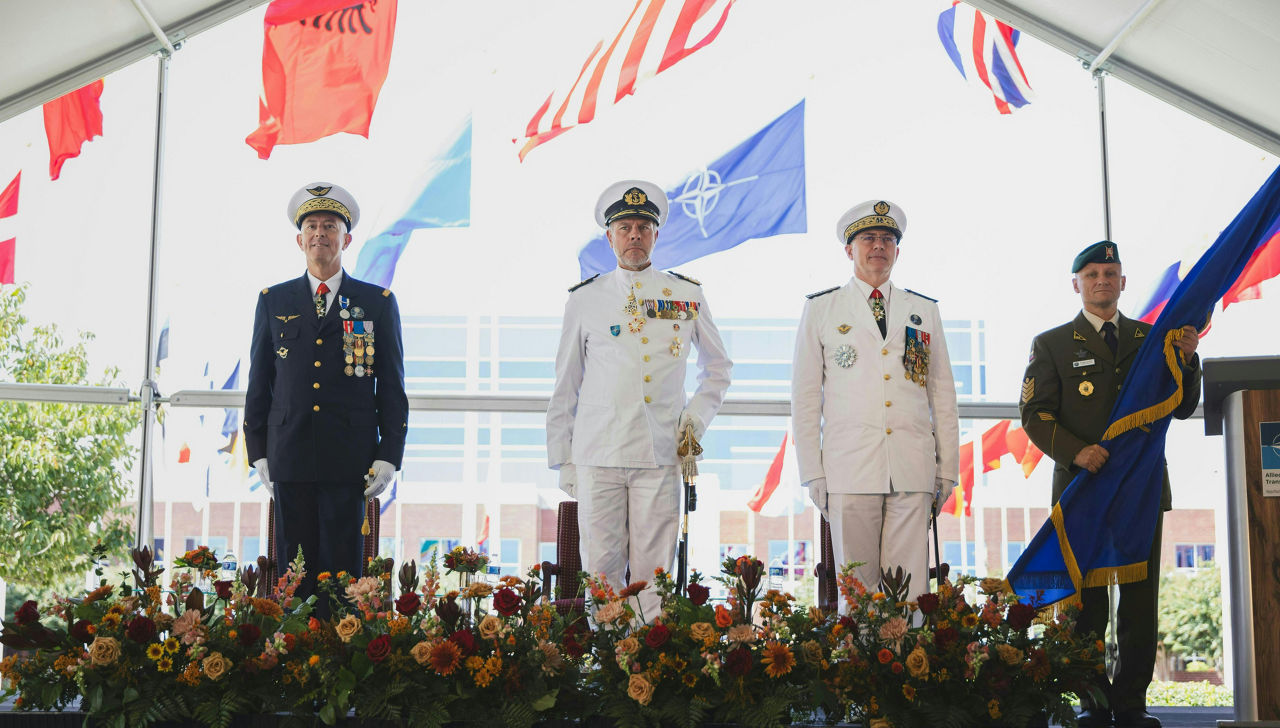Download NATO’s broadcast-quality video content free of charge

Log in
NATO MULTIMEDIA ACCOUNT
Access NATO’s broadcast-quality video content free of charge

Check your inbox and enter verification code
You have successfully created your account
From now on you can download videos from our website
Subscribe to our newsletter
If you would also like to subscribe to the newsletter and receive our latest updates, click on the button below.
Enter the email address you registered with and we will send you a code to reset your password.
Didn't receive a code? Send new Code
The password must be at least 12 characters long, no spaces, include upper/lowercase letters, numbers and symbols.
Your password has been updated
Click the button to return to the page you were on and log in with your new password.
Supreme Allied Commander Transformation (SACT)
Updated: 24 September 2024
The Supreme Allied Commander Transformation (SACT) is one of NATO’s two strategic commanders and the commanding officer of Allied Command Transformation.
- The Supreme Allied Commander Transformation - or SACT - is one of NATO’s two strategic commanders.
- SACT is at the head of Allied Command Transformation and, as such, is responsible to NATO’s highest military authority - the Military Committee - for promoting and overseeing the continuing transformation of Alliance forces and capabilities.
- He helps to identify and prioritise future capability and interoperability requirements and channels the results into NATO’s defence planning process.
- SACT explores new concepts and doctrines by conducting experiments and supporting the research & development and acquisition of new technologies and capabilities.
- He is also responsible for NATO’s training and education programmes.
- The current SACT is French Navy Admiral Pierre Vandier.
Role and responsibilities
SACT has the lead role at the strategic level for the transformation of NATO’s military structures, forces, capabilities and doctrines in order to improve the military effectiveness of the Alliance.
The incumbent makes recommendations to NATO's political and military authorities on transformation issues. For day-to-day business, SACT does this by reporting to the Military Committee, composed of Military Representatives for Chiefs of Defence of NATO member countries; by having direct access to the Chiefs of Defence and communicating with appropriate national authorities, as necessary, to facilitate the accomplishment of designated tasks.
In cooperation with Allied Command Operations, SACT analyses NATO’s operational needs, in order to identify and prioritise the type and scale of future capability and interoperability requirements and to channel the results into NATO’s overall defence planning process.
The Supreme Allied Commander Transformation also leads efforts to explore new concepts and doctrines by conducting experiments and supporting the R&D and acquisition of new technologies and capabilities, while carrying the responsibility for NATO’s training and education programmes, designed to ensure the Alliance has at its disposal staffs trained to common NATO standards and capable of operating effectively in a combined and joint force military environment.
Other tasks that come under the responsibility of the Supreme Allied Commander Transformation include:
- managing commonly funded resources allocated for NATO’s transformation programmes in order to provide timely, cost-effective solutions for operational requirements;
- supporting the exercise requirements of Allied Command Operations throughout their planning, execution and assessment phases.
Selection process
SACT is proposed by a NATO member country and approved by the North Atlantic Council of NATO. There is no assigned term for SACT.
Evolution of the function
SACT’s command is exercised from the Headquarters of Allied Command Transformation in Norfolk, Virginia, United States. Since 2009 – the year France decided to fully participate in NATO structures following its withdrawal from the integrated military structure in 1966 – a French General Officer has held the position of SACT: General Stéphane Abrial (2009-2012), General Jean-Paul Paloméros (2012-2015), General Denis Mercier (2015-2018), General André Lanata.(2018-2021), General Philippe Lavigne (2021-2024) and currently Admiral Pierre Vandier.
From 2002 to 2009, SACT was a United States Flag or General Officer, and dual-hatted as Commander of the U.S. Joint Forces Command, the post responsible for maximising future and present military capabilities of the United States. The first SACT was Admiral Edmund P. Giambastiani Jr. from 2002 to 2005, followed by General Lance L. Smith from 2005 to 2007, and then General James Mattis from 2007 to 2009.
Prior to the reform of the NATO Command Structure in 2002, the then Supreme Allied Commander Atlantic (SACLANT), was responsible for safeguarding the Allies’ sea lines of communication, supporting land and amphibious operations, and protecting the deployment of the Alliance’s sea-based nuclear deterrent. Allied Command Atlantic extended from the North Pole to the Tropic of Cancer and from the coastal waters of North America to those of Europe and Africa, including Portugal, but not including the Channel and British Isles, which were part of what was Allied Command Europe at the time (now Allied Command Operations).


